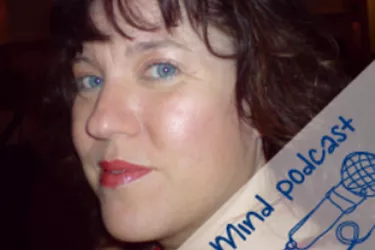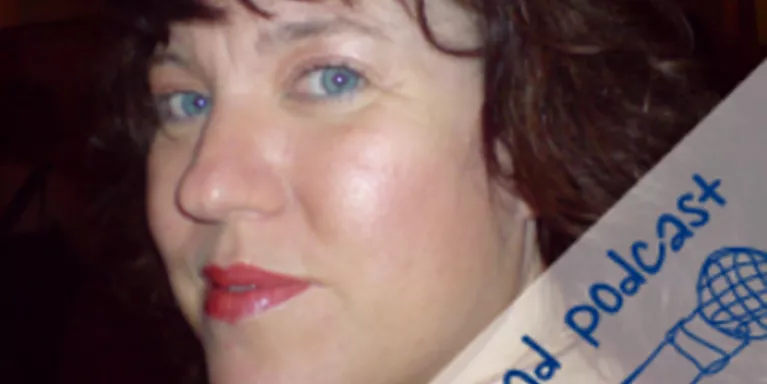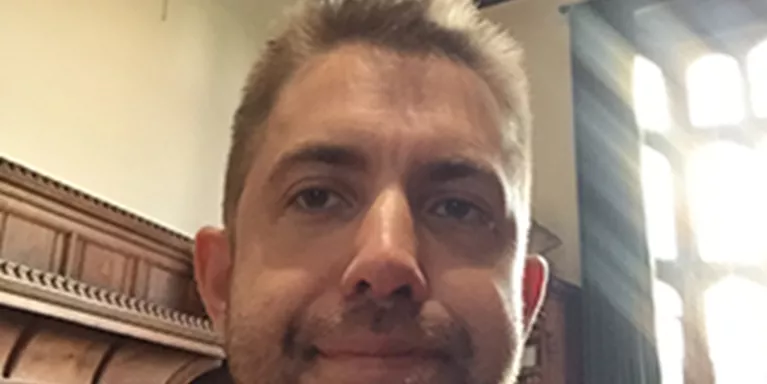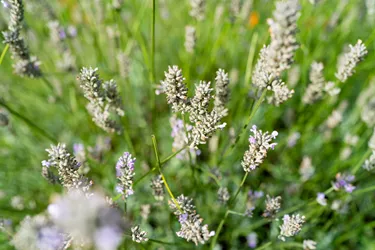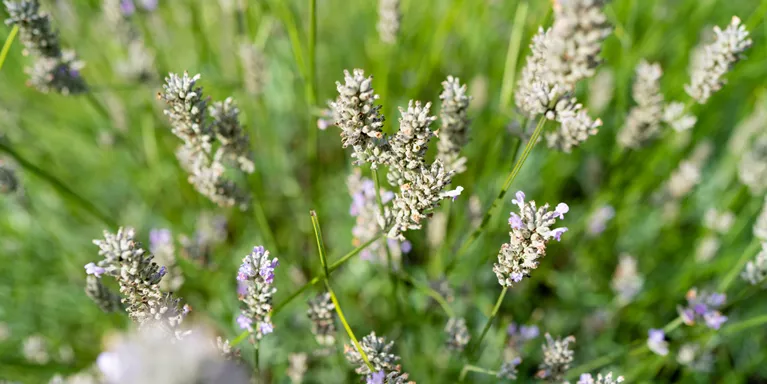How I found the joy in SAD
Lorna describes how she learnt to live with seasonal affective disorder by embracing her love of nature.
Fourty-year-old Lorna who suffers from SAD is an early riser, animal-loving, insect saving, tree hugging, dairy scribbling writer on wellbeing.
I have learned to live with the ebb and flow of the seasons. I now think it’s a way of living that connects me to nature, and I don’t see SAD as a disorder – just a way of being. But it wasn’t always this way, and it’s not always plain-sailing.
"A veil of darkness sits heavily over me until spring."
It all begins in the autumn. In the weeks leading up to the clocks going back I start to feel sluggish and down. It’s harder to keep to my morning routine of going out for a walk before breakfast because it’s wet and cold and dark. Then, the clocks go back and I have a little reprieve because it’s suddenly lighter again in the morning and I feel more alive as I can get up early and get outside again. I’m lifted temporarily until nature catches up with both ends of the day and a veil of darkness sits heavily over me until spring.
"By December, I am absolutely shattered mentally and physically and the best cure is just to go to sleep."
I go to bed very early from when the clocks go back until spring. I’m usually asleep before 8pm. This means I have basically no social life. Something as simple as enjoying a film in bed with my husband after work is impossible as I’m ready to go to sleep just after dinner. By December, I can be in bed by 6.30pm shattered mentally and physically and I know the best cure is just to go to sleep.
Until l learned to embrace SAD, I often found myself wide awake, agitated and anxious because the day hadn’t begun. I would wait around in silence at home for the day to start – not wanting to make any noise for fear of waking up my husband or neighbours. It felt so frustrating because early mornings are my favourite time and the day often feels like it’s over by 10am because there are too many people about, too much noise, and the pace of life is too fast, too ugly, too shallow. In the warmer, lighter Summer months I could get outside and begin the day at 4am, but in winter I’d feel like a dead battery and just want to hide myself away from the world. I could easily spend all day in my sanctuary of bed, warmth, dog and books.
But it’s not all doom and gloom – even if the dark mornings persist. I’ve learned to live with this and adapt. It’s something that’s natural to me and it’s better to go with the flow. I’m a morning person, and mornings make me so happy. So now I get up early, wrap up warm, put on my pedometer and walk in the dark and enjoy the solitude. I can’t walk in my spring/summer-time places beside the river or in the woods as it’s too dark, so instead I walk under the street lights where I live – looking up at the stars and the moon and the feeling of being the only person up and out while the rest of the world is tucked up in bed.
By the time people are up and about, I’m back home having walked a good few miles and feel so much better for it. I no longer wallow in my own grumpiness or pace the house in silence at 4am. When it gets icy or snowy and can’t get outside for those moonlit walks my mood slips. I crave routine and structure and a week of snow and ice can bring havoc to my serenity.
"If SAD could be reduced to some simple maths equation it would look something like social life + winter = impossible."
In the past, I’ve tried to act like a normal person and be sociable in the evenings or weekends. Now, I don’t even try to go out in the evenings so there’s no beating myself up when I make wafer-thin excuses to dear, patient loved ones for the umpteenth time. If SAD could be reduced to some simple maths equation it would look something like social life + winter = impossible. With the caveat of morning coffee + winter = doable on a good day.
SAD lamps are a great but if you suffer from migraines (raises her hand) they can bring one on really quickly. January and February are by far the worst months. December is dark but the festive lights and cheerfulness are an antidote and I now put up my Christmas decorations really early (1 December) as a way of coping with my SAD symptoms. If it’s impossible to get out for a walk then I just want to stay in bed with my electric blanket, my dog, books, laptop and lots of comfort food. I won’t reply to emails, messages. If you’re reading this and you know me you probably won’t believe it because when I choose to be sociable I’m actually rather chirpy and I come across as a happy-in-their-own-skin extrovert.
In spring – something strange happens. I become hyperactive. I love spring and want to be outside all the time. I feel less tired in the evening and can stay awake past 9pm. By May- June I’m still awake by 10.30-11pm and am wide awake about 4am again. My mind is buzzing with ideas. I feel sociable and suddenly start making plans and getting in touch with people. I feel so alive. I exercise lots and am full of ideas to the extent that I wake up lots through the night just buzzing with everything. I burn the candles at both ends and I feel anxious because I know now that it’s borrowed time because by mid-Summer, around the Solstice I’m hit by the lethargy bus again.
It comes out of nowhere and I’m so exhausted I think it must be a virus. I fall asleep in the middle of the day. I close the curtains in the evening and wish It was dark so I could go to bed early but It’s broad daylight, 8pm and I can hear people outside and I feel like a freak because I need to sleep and withdraw again from the world.
But, unlike the winter, I don’t feel down during this time. During this time, I withdraw, but I withdraw into nature. I spend as much time as I can alone - just me, my dog, a rucksack and a walk ahead of me. It brings me so much joy. I’m happy in my own little world.
Come autumn, and I feel better physically. I have more energy. I feel more sociable again, but in a way that feels more balanced. It’s not the manic mental, social and physical busyness of spring. I am like a ‘normal’ person for one season of the year. But then, the darkness starts again, and we’re back where we started again!
My SAD cycle used to make me feel like something was seriously wrong with me. Now I no longer see it as a disorder. Yes the way I’m affected by the seasons has brought many limitations to my personal and professional life. But, it’s also made me feel incredibly connected to the natural world. I experience joy in the simplest things like standing under an inky sky full of stars at 5 am in the morning or snuggling into my duvet at 7pm on a Friday night knowing I have hours of restorative, peaceful, sleep ahead of me. It is just a way of life which I’ve thankfully learned to accept, adapt to and embrace.


Information and support
When you’re living with a mental health problem, or supporting someone who is, having access to the right information - about a condition, treatment options, or practical issues - is vital. Visit our information pages to find out more.
Share your story with others
Blogs and stories can show that people with mental health problems are cared about, understood and listened to. We can use it to challenge the status quo and change attitudes.










